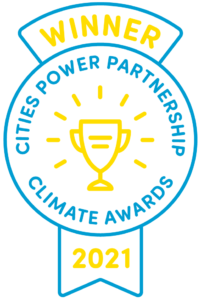Greater Dandenong’s first-of-its-kind climate change self-assessment tool for evaluating asset and infrastructure project funding bids is playing a major role in lowering emissions across the community.
This case study looks at how the Council is embedding climate change considerations through its operational and decision-making processes.

Why City of Greater Dandenong is taking action on climate change
Like many other councils, the City of Greater Dandenong felt a growing concern from leaders and the community about the impacts of climate change. In January 2020, the Council joined a number of cities around Australia and declared a ‘Climate and Ecological Emergency’, committing to emergency action on climate change.
In response to this declaration, Council formally adopted the Climate Emergency Strategy 2020-30 in August 2020, which provides a comprehensive framework for urgent climate action. One of the key areas of action prioritised is the embedding of climate change consideration into all of Council’s operational and decision-making processes.
How Greater Dandenong City Council is embedding climate change throughout its operations
Through a survey, one-on-one and team discussions, and trial and error using previous bids as examples, the City Improvement Program (CIP) Climate Change Self-Assessment Mechanism was born.
With 177 bids for funding for infrastructure and asset projects received in the 2020/21 financial year, Council’s CIP was a natural place to start.
The objective of developing a climate change self-assessment method for evaluating CIP projects is to incorporate climate change considerations into the bidding process. Under the new tool, project bids are assessed on how well the project responds to climate change and how well the 10 themes of Council’s Sustainability Strategy 2016-30 are represented, including:
- biodiversity and open space
- water and stormwater
- waste and resources
- transport and movement
- climate and energy
- buildings and places
- environmental pollution
- local and sustainable food
- local community and culture
- local business and economy.
To Greater Dandenong’s knowledge, this is the first tool of its kind to address climate mitigation within asset and infrastructure bid funding.
Encapsulated in an Excel spreadsheet, the self-assessment mechanism is intuitive to navigate and contains both instructions and further resources to guide staff in completing their assessment. The tool incorporates smart formulas based on project classification in the background to enable assessors to determine at a glance whether the project meets best practice sustainability requirements.
The tool supports bids that pledge to:
- prioritise local suppliers, businesses and materials
- contribute positively to community culture and diversity
- contribute positive to community health and wellbeing
- support the community to grow their own food
- improve access to walking and cycling networks
- support access to safe, connected and well-serviced public transport options
- increase community access to open space.
If a bid is successful, there is an expectation that the climate strategies outlined within the bid will be delivered by the Project Manager as part of project delivery.
Outcomes
The development of the tool has helped to embed a whole-of-council understanding of climate change and sustainability. Thanks to the involvement of a range of officers from many different departments from project inception to the present, this collaborative undertaking is now driving council’s approach to the climate emergency and increasing political awareness of the importance of urgent action.
The journey isn’t over. The process of better incorporating climate change consideration into Council’s asset management framework has been developed in two stages:
- Stage 1 (completed): creating a framework and scoring mechanism to assess how the implementation of a project would be directly addressing the climate emergency. This process is designed to provide an objective rating for each CIP project.
- Stage 2 (in progress): creating an emissions and dollar figure comparison rate calculation to be used for each project to compare the whole of life costs for the project and better inform how maintenance and management decisions affect Council’s impact on the environment.
The tool is part of Greater Dandenong City Council’s commitment to achieve net zero carbon emissions across all operations by 2025 and it hopes to share its tool and learnings with any council who is interested.
Greater Dandenong City Council was a winner in the Innovation category in the Cities Power Partnership Climate Awards 2021.
For more information about this project or other case studies on our website, please contact us at cpp@climatecouncil.org.au.



